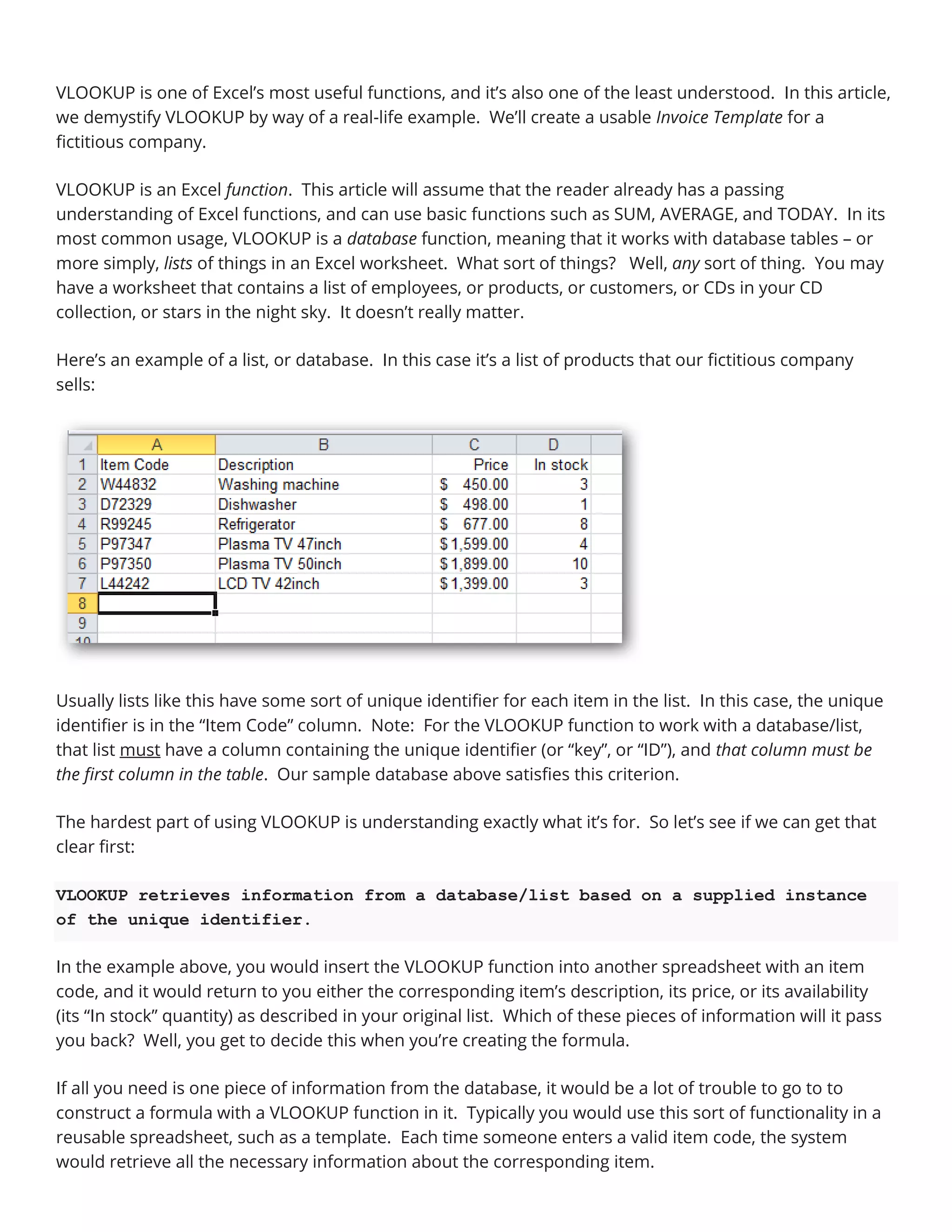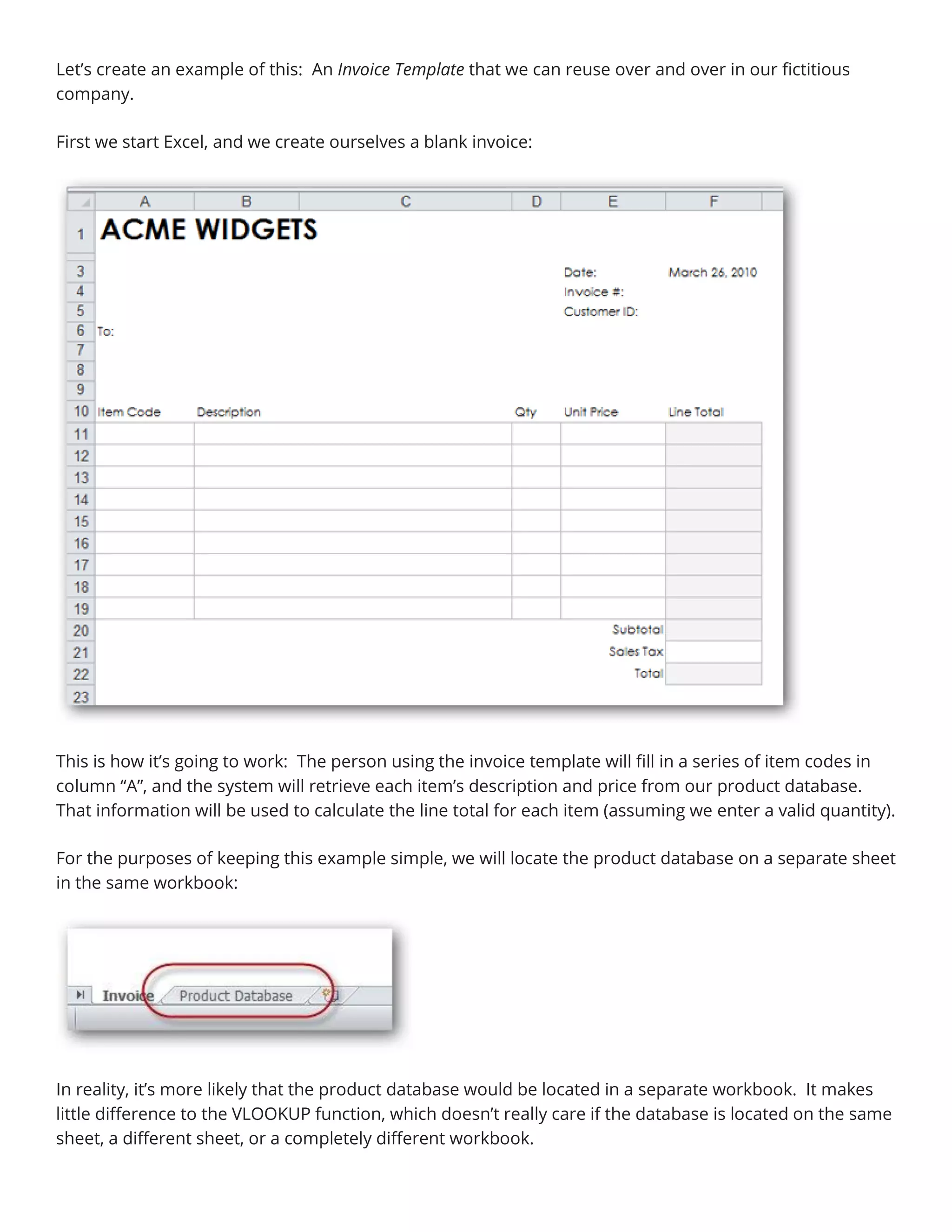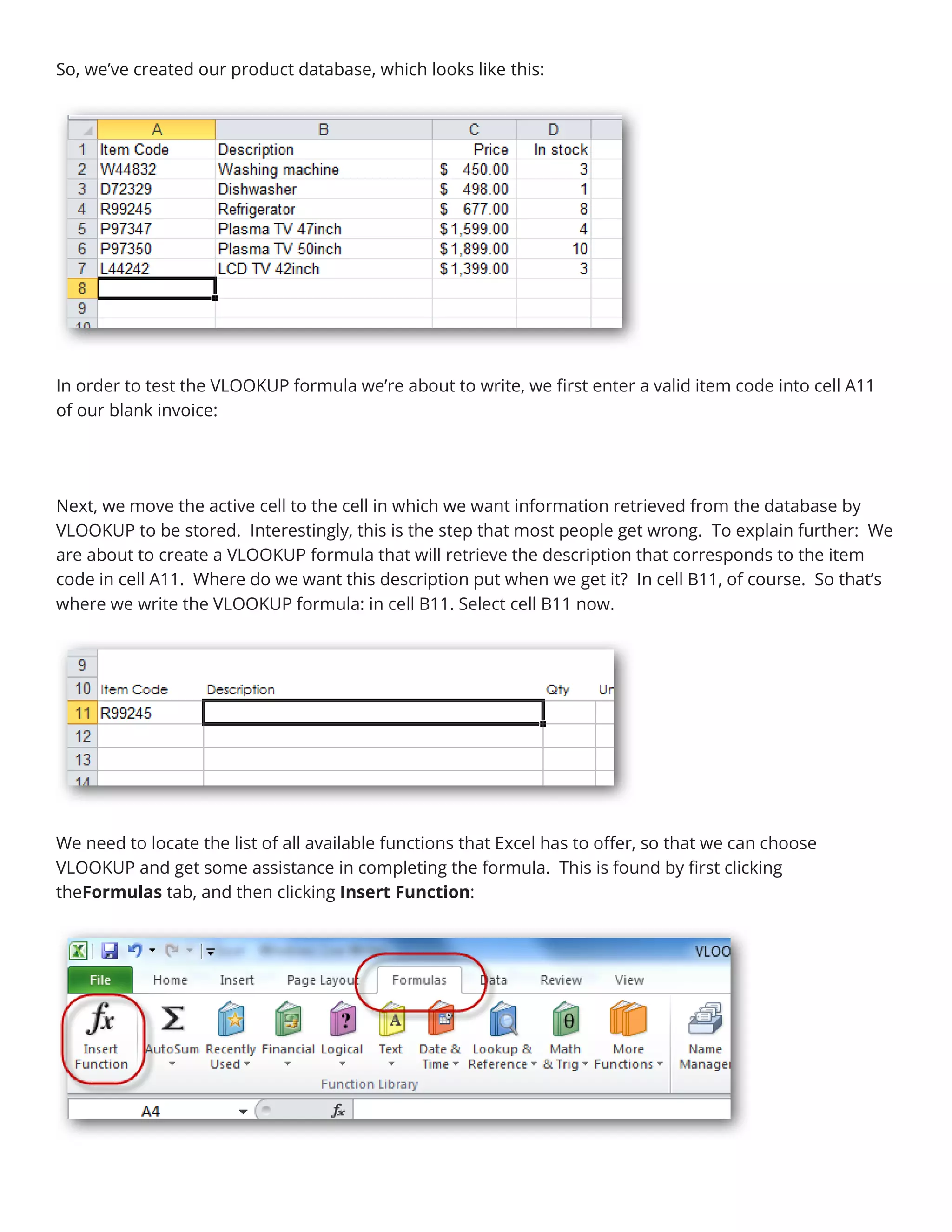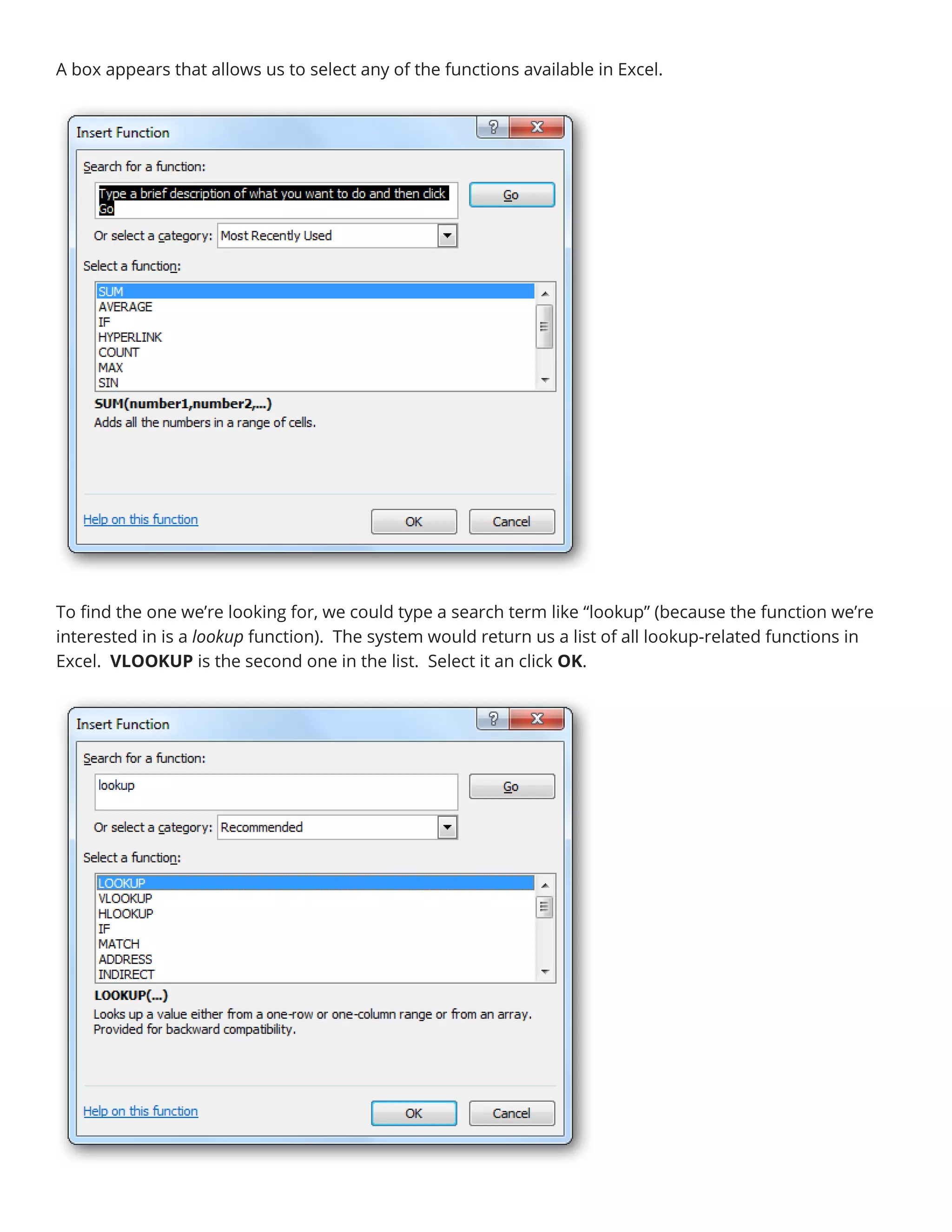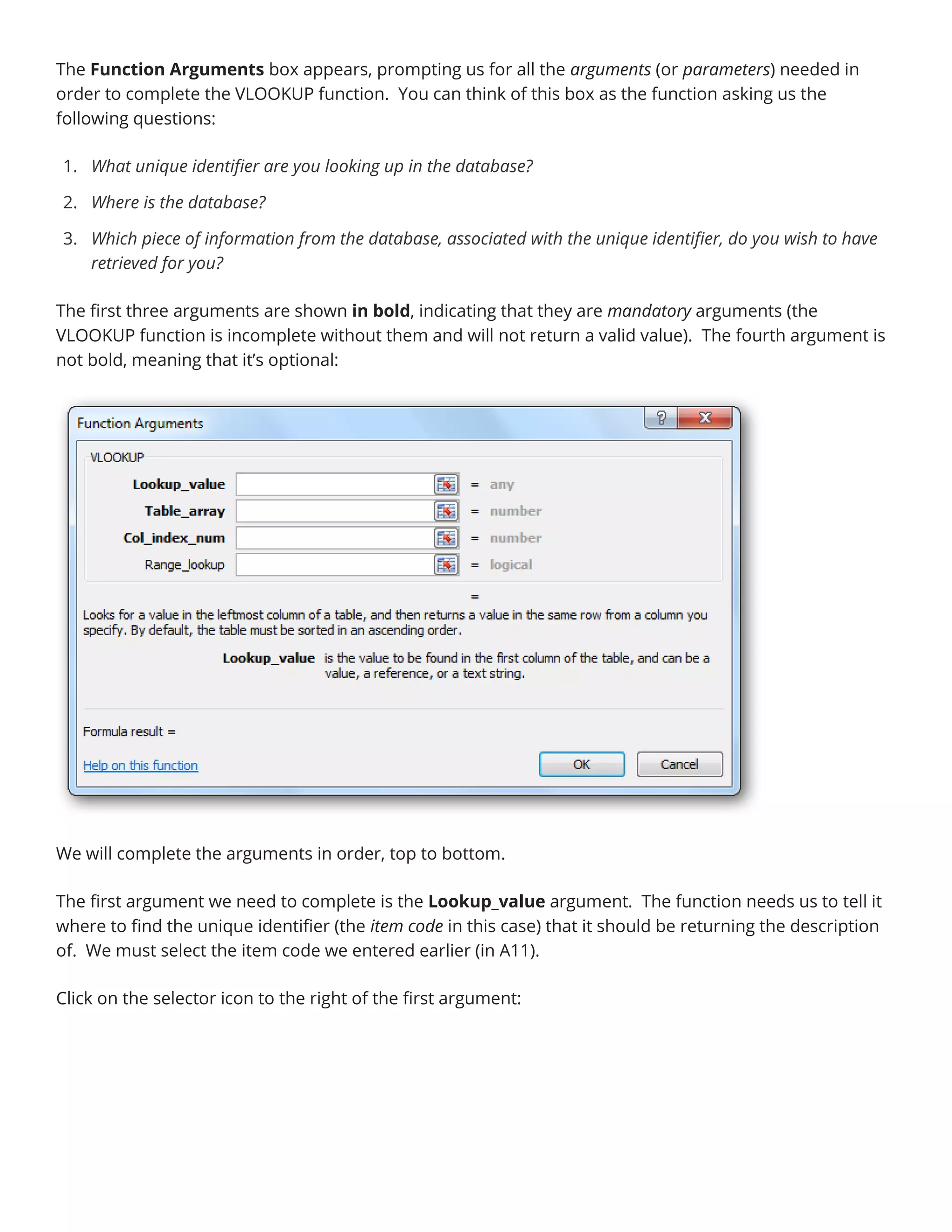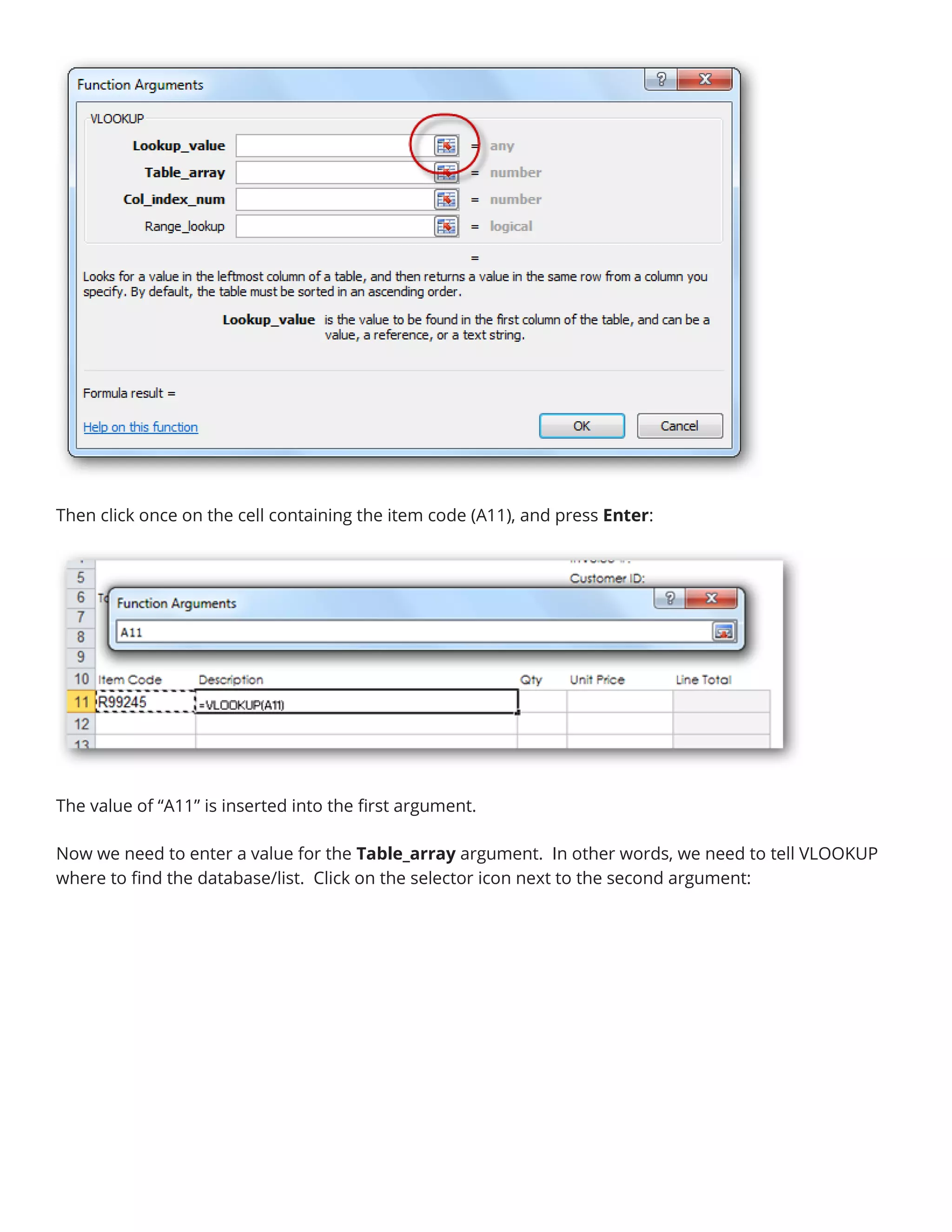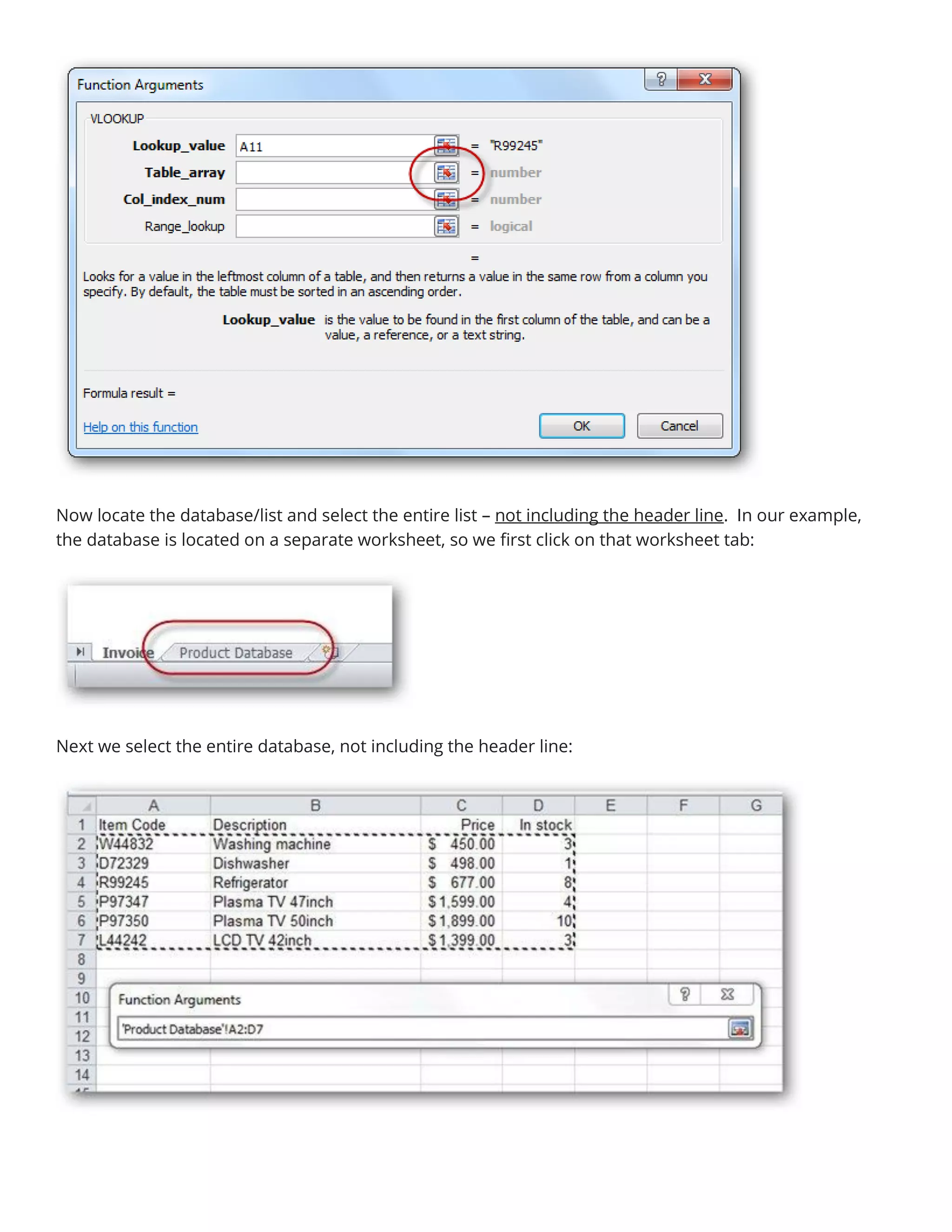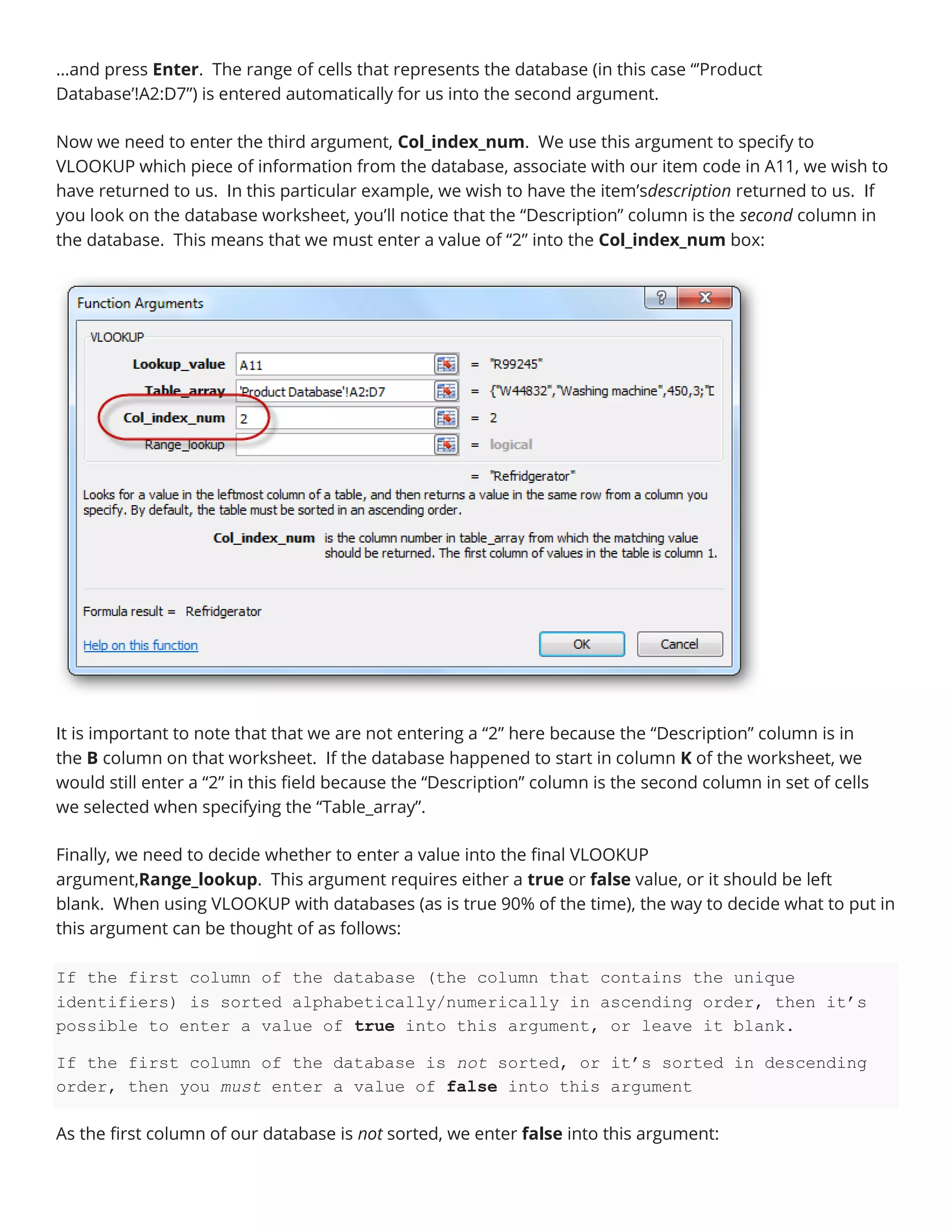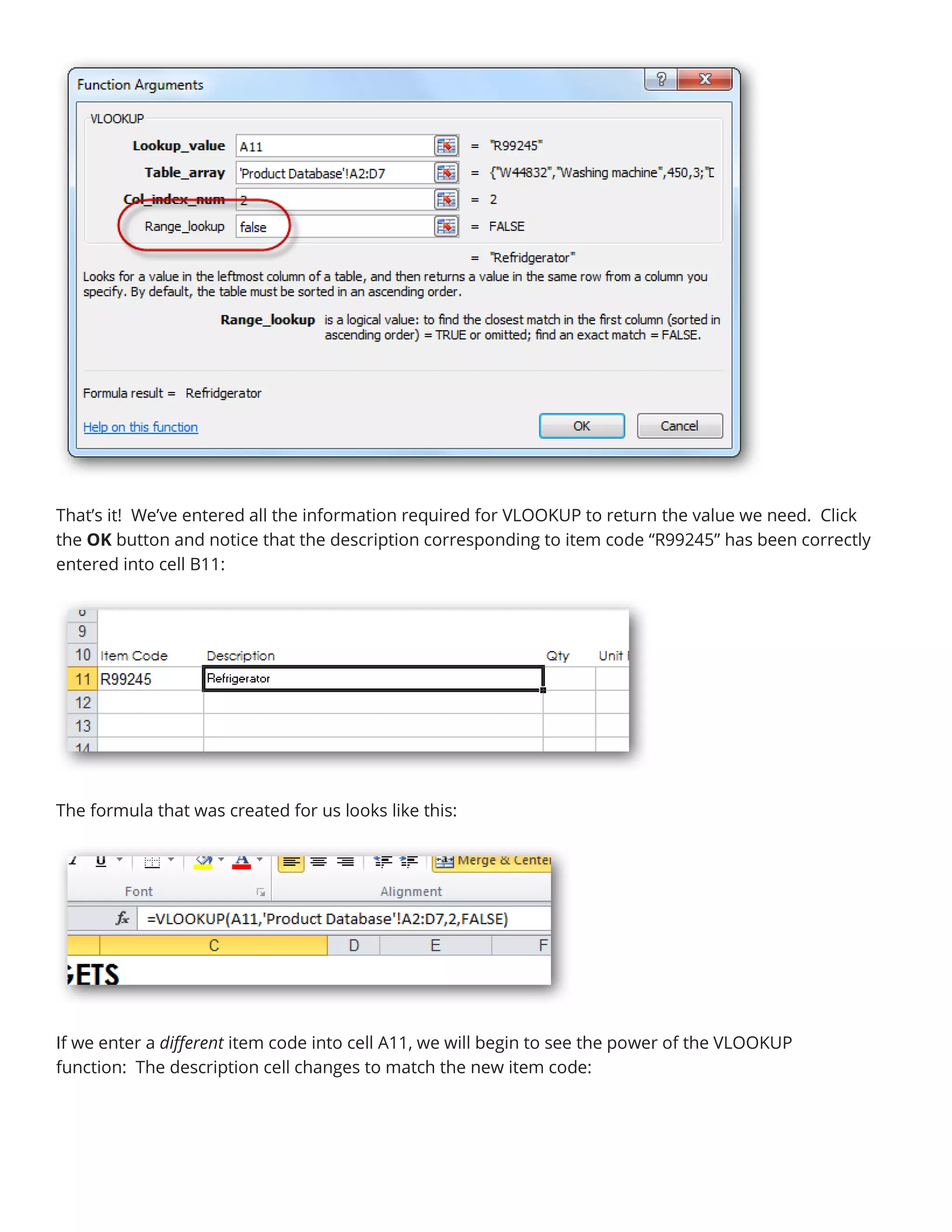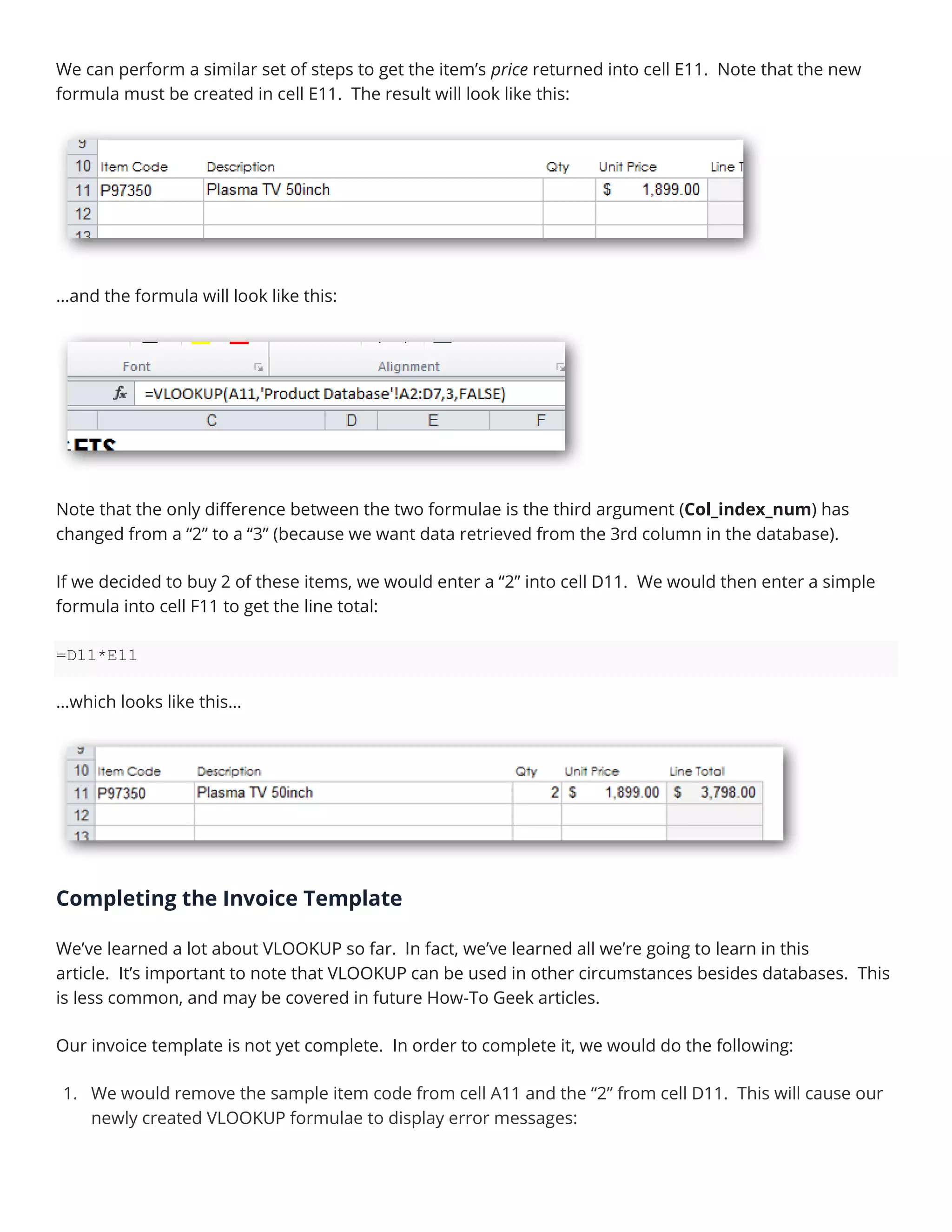VLOOKUP is a useful Excel function that retrieves data from a database or list based on a unique identifier. This document demonstrates how to use VLOOKUP to build an invoice template that automatically populates item descriptions and prices from a product database. It shows entering an item code, writing the VLOOKUP formula to return the corresponding description, and copying the formula down to complete the reusable template.
